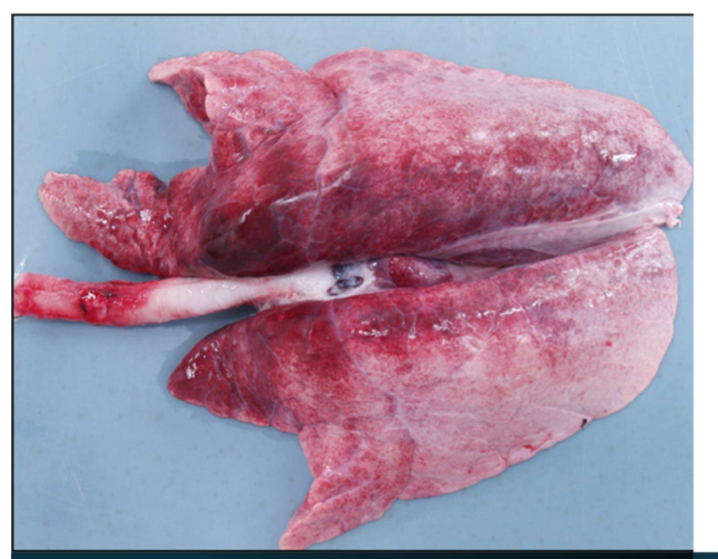Red Meat Postmortem CRW
1/19
Earn XP
Description and Tags
alright, this is not a well put together slide set at all. I wrote down what I could when she was talking and the powerpoint she posted after does not provide answers to everything that she asked. Have fun!
Name | Mastery | Learn | Test | Matching | Spaced |
|---|
No study sessions yet.
20 Terms
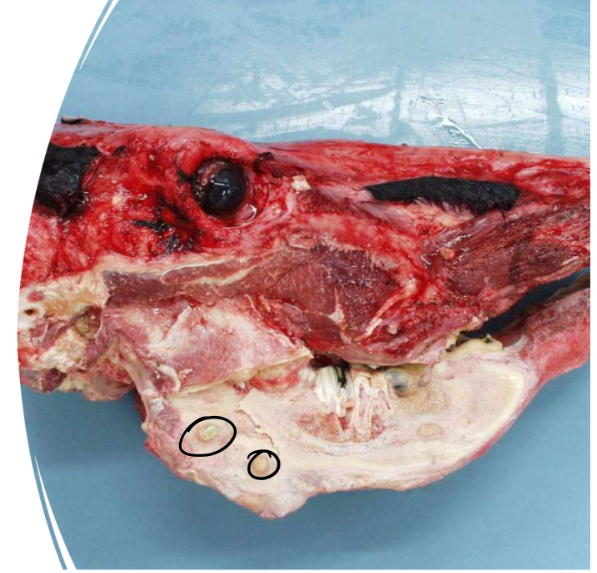
Species, specimen
Describe using 3 terms
Potential diagnosis
Judgement
Species, specimen- bovine head (jaw)
Describe using 3 terms- multi focal, circular, rounded, yellowish
Potential diagnosis- “lumpy jaw” (osteomyelitis)
Affected bone (ramus) is thickened and honeycombed with grey nodular masses
Result of general infection in bone following fracture of mandible or broken infected teeth
Judgement- local rejection- unless emaciated (usually due to long duration of disease)
ABP- 2
Extra notes mentioned:
Actinobacillosis- wooden tongue May also see ulcers on tongue from uncomfortable movement, would need to reject tongue for consumption
Thickened and very firm
Abscesses or local scars on surface
± granuloma in local nodes
Check lungs, esophagus, and rumen for secondary infection
Oral ulceration- single ulcers on tongue or mouth
most commonly associated with viral infection (systemic BVD/MD, MCF)
Judgement- ulcers only= local
Pyrexia= total
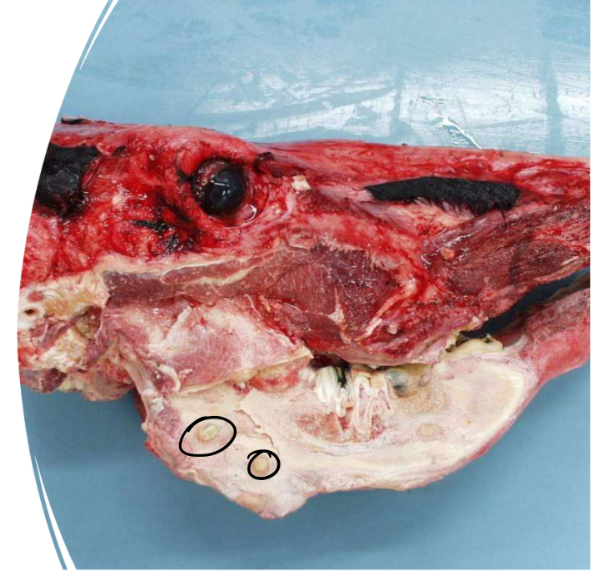
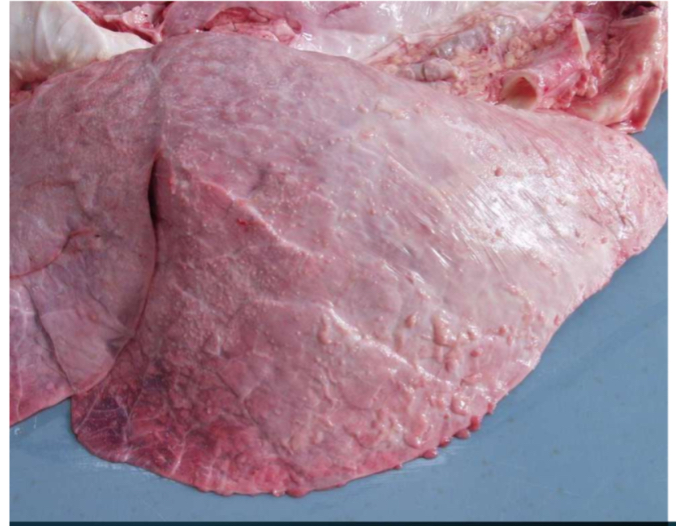
Why is there a compulsory inspection of bovine lungs?
Describe using 3 words
Potential diagnosis
Judgement including ABP category
Compulsory inspection of bovine lungs- cut into lungs, mediastinum, and local lymph nodes to search for abscesses from TB.
Describe using 3 words- diffuse spread, pink-whitish
Potential diagnosis- pleurisy
Tags of fibrous tissue common along the edge of caudal lungs
if there is granulation tissue present along with these tags, consider tuberculosis
Notifiable disease- APHA phone call
Check popliteal lymph nodes- if spread to there then most likely whole carcass infected (fully rejected)
Judgement including ABP category
Local rejection-
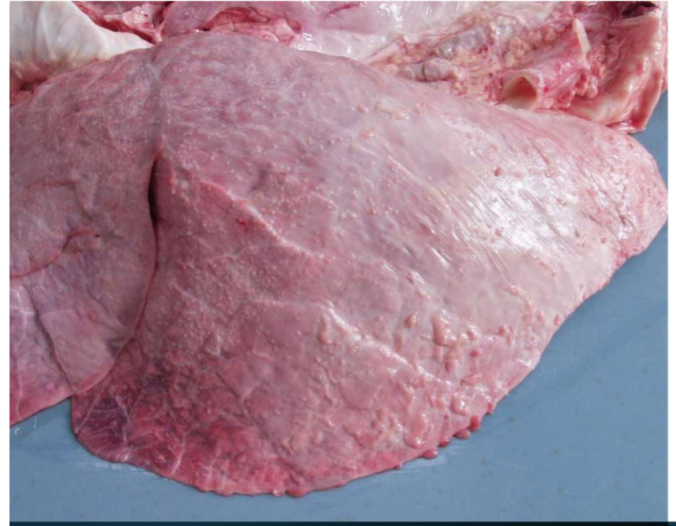
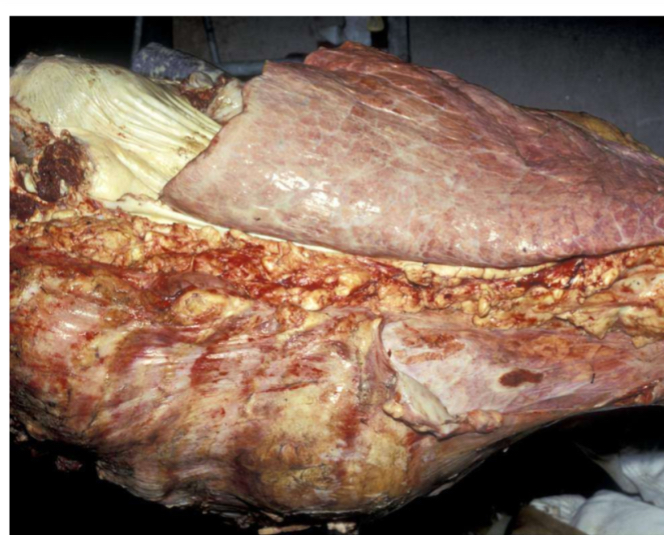
Species/specimen
Describe using 3 words
Potential diagnosis
Judgement
Species/specimen- bovine lungs- noted by divisions (lobes) in lung parenchyma
Describe this bovine lung using 3 words- enlarged, lesions concentrated dorsally (2/3rds of cranial and caudal lobes), yellow (bottom of the image)
Potential diagnosis- abscess or tumor- palpate to distinguish
Lung/mediastinal abscess- single walled-off abscess should be judged on its size and feel alone
Encapsulated on palpating
Do not open on the line
Judgement- local rejection
Tumor- unlikely to see tumor this size in cattle lungs
Usually very localized
Randomly shaped on palpating
Judgement- local rejection
Extra notes:
Chronic suppuration pneumonia- most commonly seen cattle pneumonia
Affected cranioventral parts of the lung are usually pale with distended airways
Cut surfaces filled with white mucous
Common condition in older cows
Judgement- local rejection
Check for more active focus of pneumonia in caudal lung
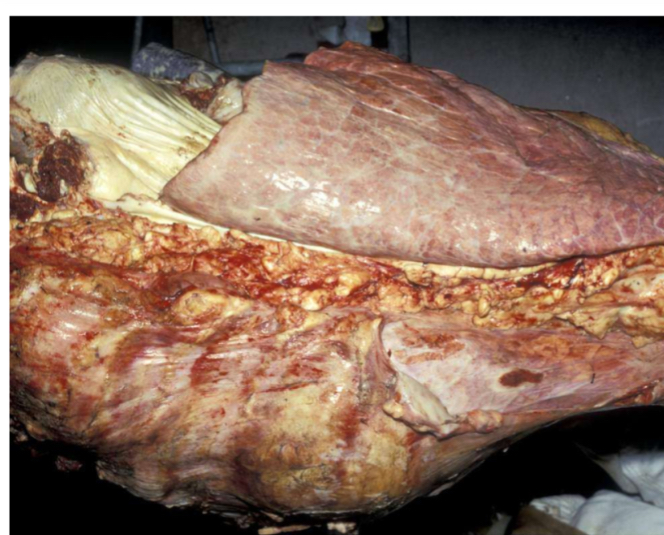
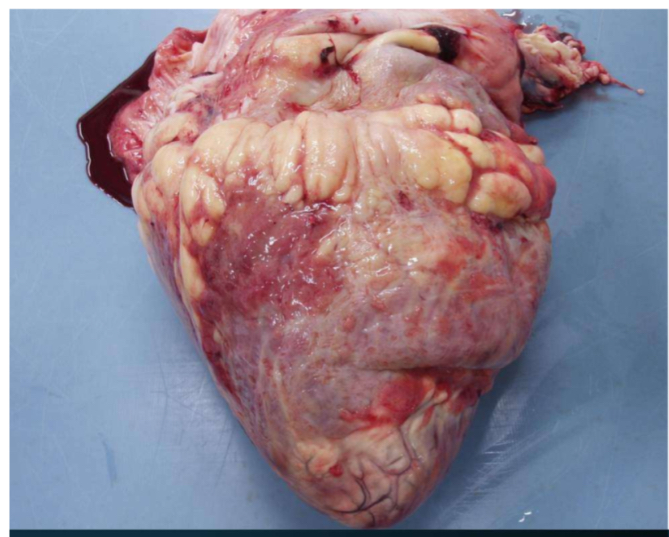
Description in 3 words
Potential diagnosis
Judgement
Ruminant heart- can tell from fat on surface (difficult question)
Description in 3 words- white, fibrinous, pink
Potential diagnosis- pericarditis
Simple pericarditis
Fibrous constrictions across pericardial sac
Patchy white adhesions btwn layers of pericardium
Mild lesion of no apparent clinical
Cause not determined at slaughter
Judgement- category 2, local rejection
Because of possible bacteria
Suppurative pericarditis
Complications of traumatic reticulitis with wire extending infection into pericardial sac
Pericardial sac contains foul smelling and pure lent or serofibrinous exudate
Judgement- category 2, total rejection
Because of possible bacteria
Judgement- category 2, local rejection
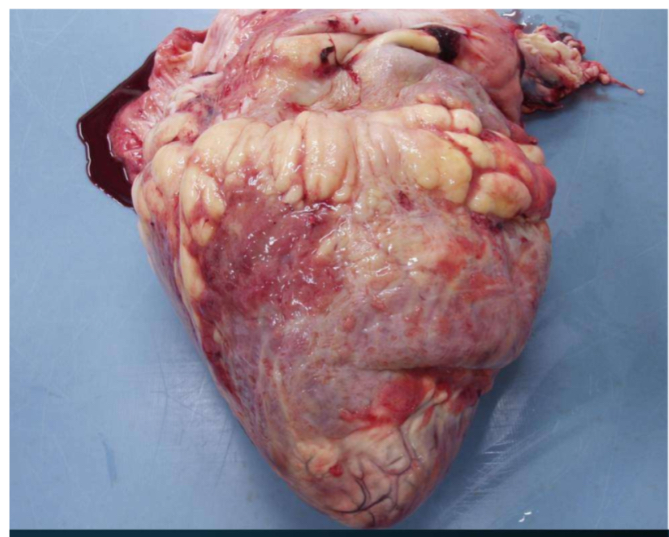
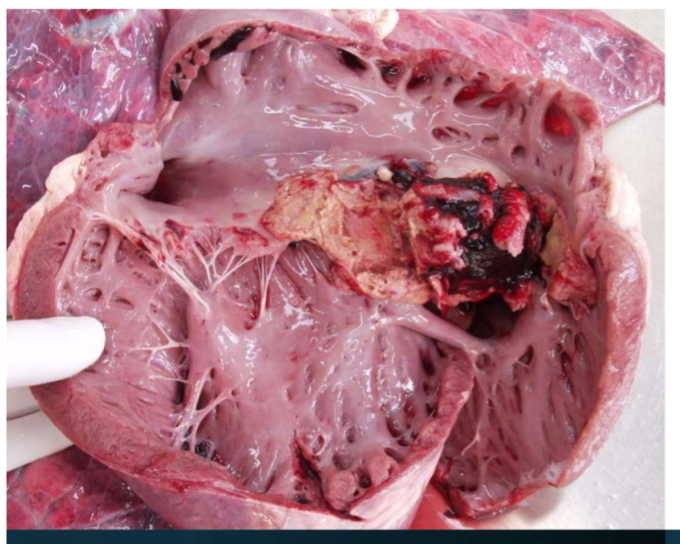
What is this bovine organ?
Describe in 3 words
Potential diagnosis
Judgement
What is this bovine organ?
Heart
Describe in 3 words- yellow deposits, sticky, melts in your hand
Potential diagnosis- endocarditis
Bacterial infection of the endocardium
Valvular or inner wall
Friable yellow/grey masses (vegetations form)
infective fragments detach and spread to other organs
right side of lung
left side to kidneys and spleen
Judgement- local rejection- category 2
If embolic- total rejection
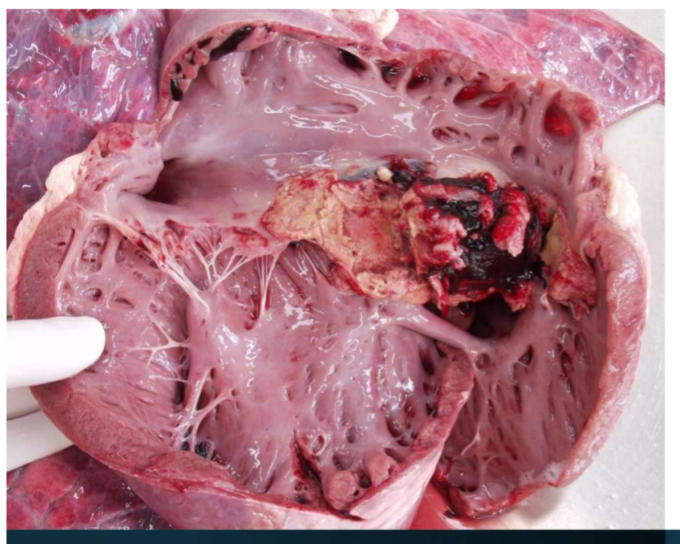
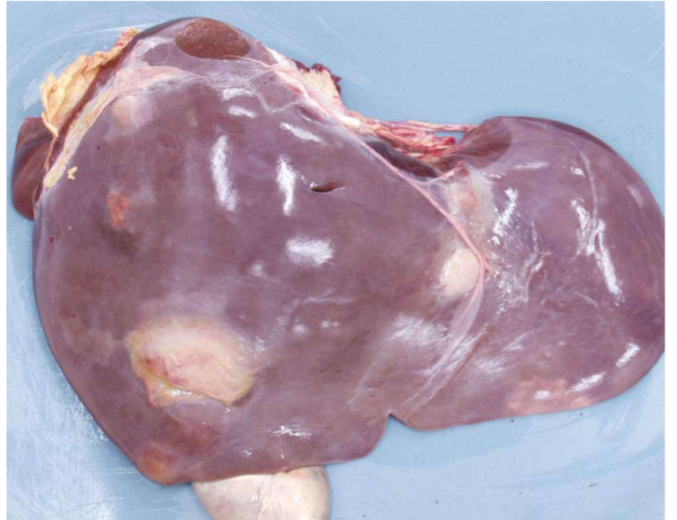
Species and organ
Describe using 3 words
Potential diagnosis
Judgement
Advice to the farmer
Species and organ- bovine liver
Describe using 3 words- multi focal, round lesions of whitish color
Potential diagnosis- liver abscess
May have few clinical signs
Extension into vena cava= severe consequences with multiple septic foci in lungs
Vena cava syndrome
Fragments of tyre wire which may contaminate silage when infested can penetrate reticulum and migrate into liver and cause abscess with peritonitis/reticulitis
Judgement- local rejection
Total if septic complications
Advice to the farmer
Make sure no debris in feed
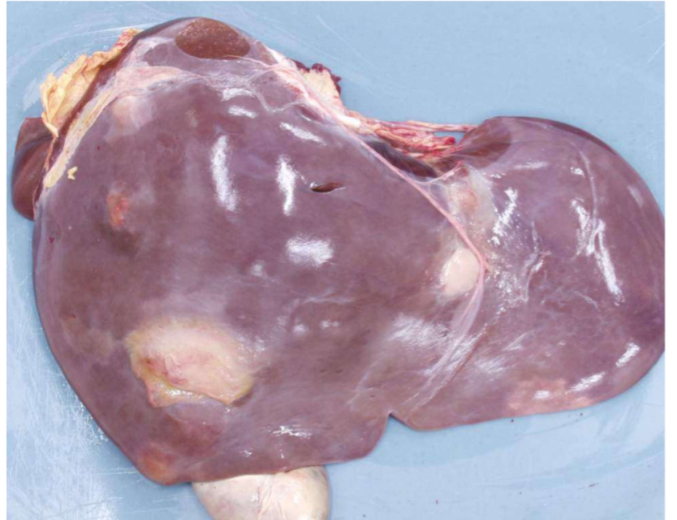
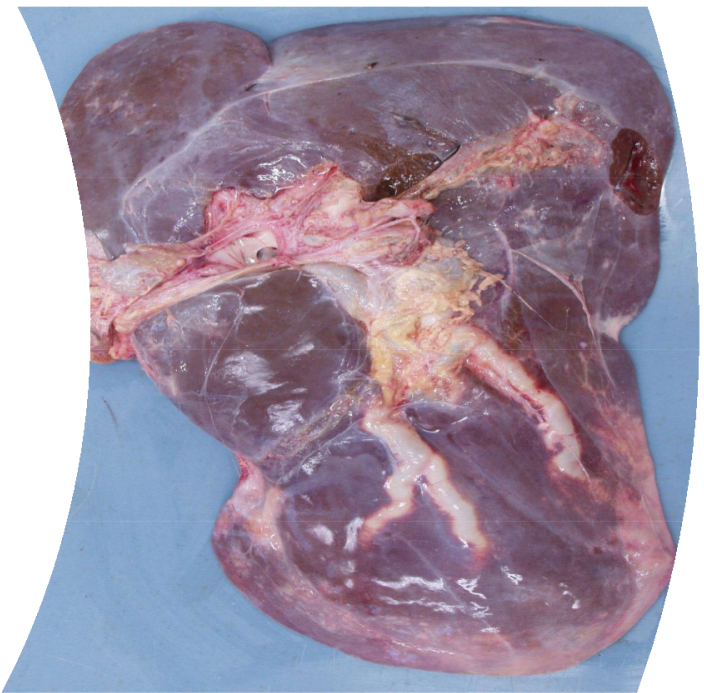
Compulsory inspection of cattle liver
Describe using 4 words
Potential diagnosis
Judgement
Compulsory inspection of cattle liver
Describe using 4 words
Potential diagnosis- fasciola hepatica (fasciolosis)
Migrate through liver causing fibrosis and adult flukes live in large bile ducts which become thickened or calcified (pipe stem)
Fluke favorite the ventral and caudal lobe- become atrophied and dorsal lobe enlarged so liver as a whole becomes rounded outline
Cattle develop good immunity to fluke so may or may not be present in bile ducts
Judgement- local rejection unless it has systemic effects (protein deposit effects, hardened fat, emaciated, etc)
Category 3 because safe for pet consumption
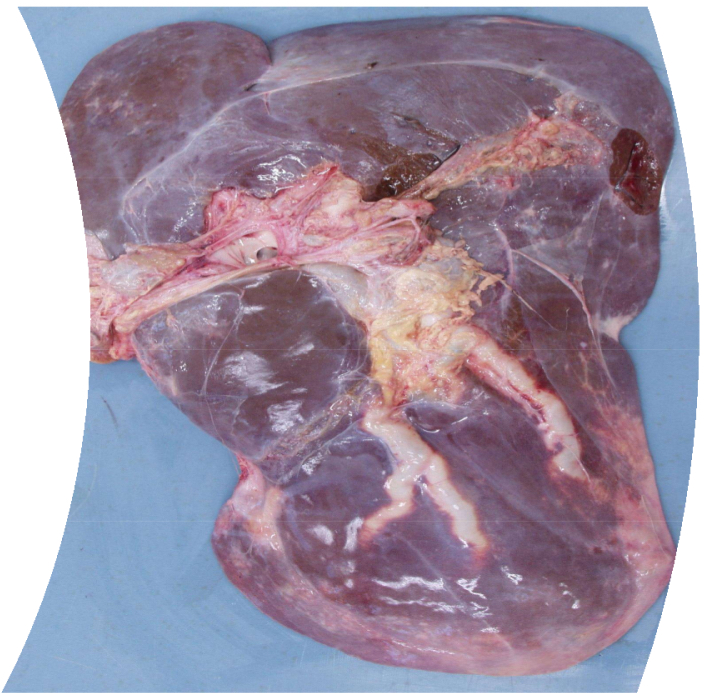
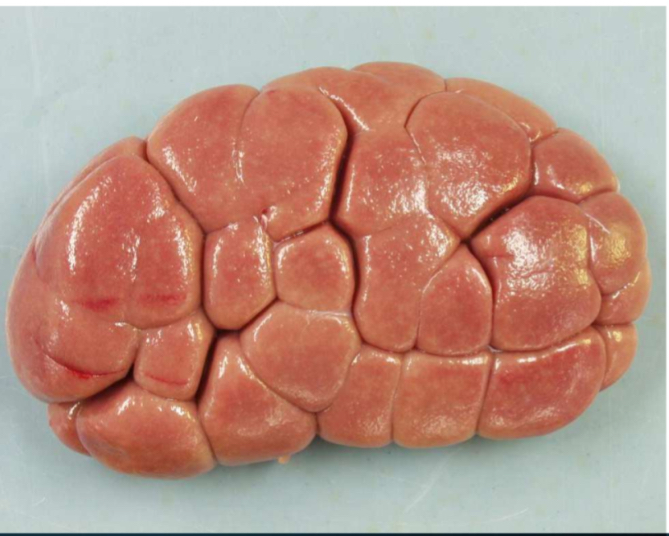
Species/specimen
Compulsory inspection of this specimen
Describe using 3 words
Potential diagnosis
Judgement
Species/specimen- bovine kidney
Compulsory inspection of this specimen- Visual inspection
Describe using 3 words- diffuse, raised, indentations, few little white spots
Potential diagnosis
Interstitial nephritis- local rejection unless uremeia (tinted coloration and funky smell)
results of a viral infection
white and spotted in acute cases
all ages male and female
Judgement- local rejection, if uremia then total rejection
Category 2
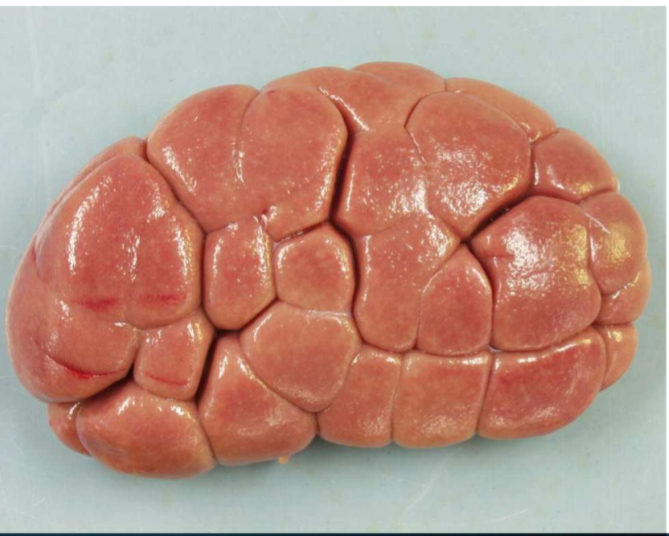
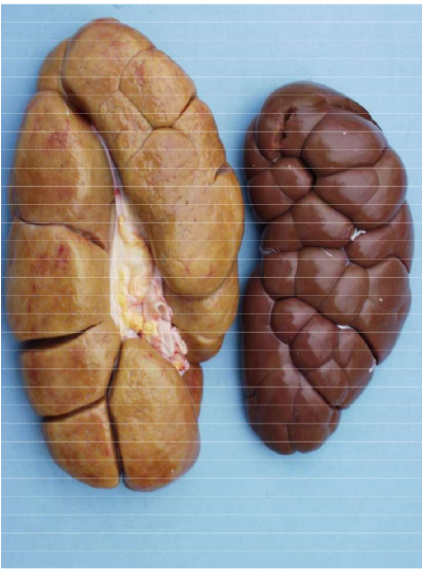
Species/specimen
Describe using 3 words
Potential diagnosis
Judgement + ABP category
Species/specimen- Bovine lung
Describe using 3 words- yellowish, pale,
Potential diagnosis
Amyloidosis- protein degeneration
Massively swollen kidneys
Color varies from yellow to orange (grey late stage)
Carcass poss odematous (due to protein loss)
Judgement + ABP category
Local rejection- total if edematous and emanation
Category 3- doesn’t look nice but no issues
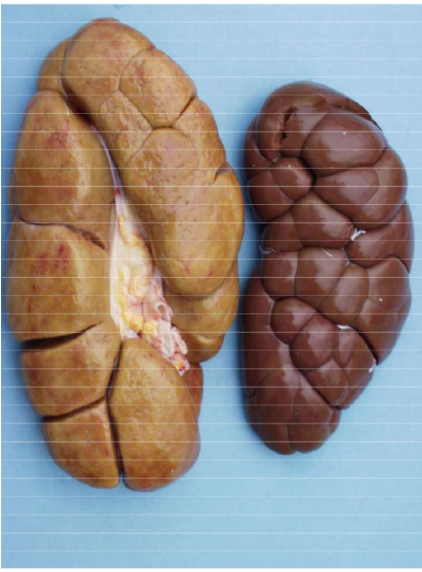
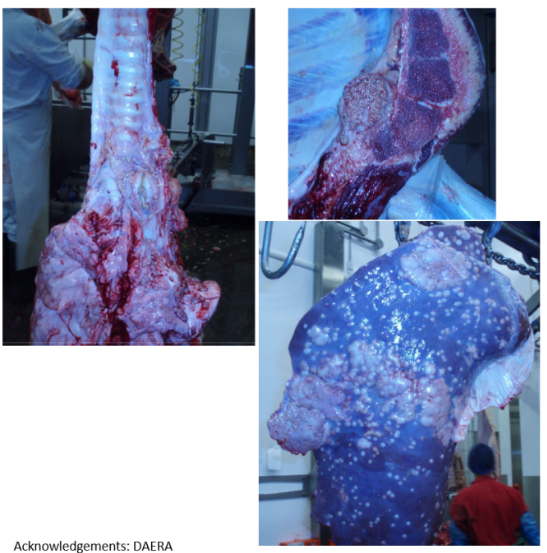
Describe the common lesions across these specimens
Potential diagnosis
Judgement + ABP category
Describe the common lesions across these specimens
Granuloma, pale, multi focal, soft consistency
Potential diagnosis- tuberculosis
Notifiable
Judgement + ABP category- total if both sides of diaphragm
Sometimes partial if possible
Extra notes:
TB examination
inspect vertebrae, ribs, sternum, spinal cord
if concerned then:
detain and seize carcass
notify APHA
take sample (retropharyngeal and broncomediastinal lymph nodes)
examine all lymph nodes in detail
if lesions both sides of diapgragm, seize and condemn
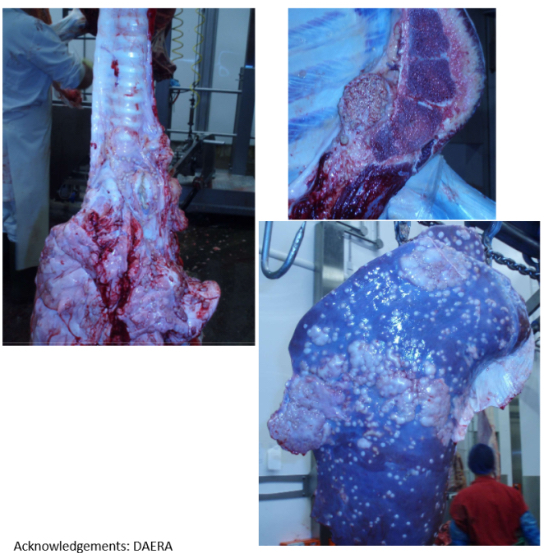
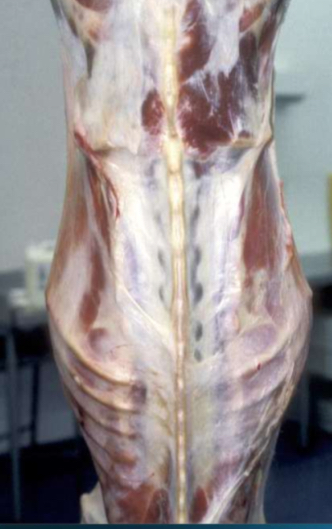
Describe in 3 words
Potential diagnosis
Judgement
Describe in 3 words
Potential diagnosis- emaciation (vestigial fat is gelatinous)
Wasted carcass due to disease process often associated with edema of carcass
If carcass still shows edema several days post hanging= johne’s disease
Judgement- total rejection- category 2
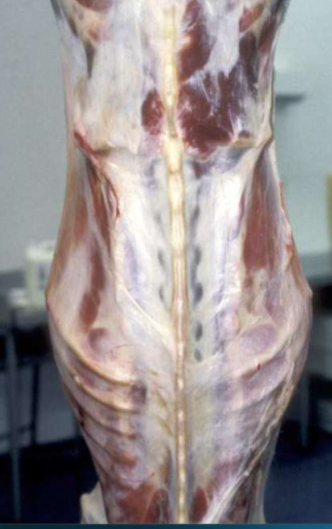
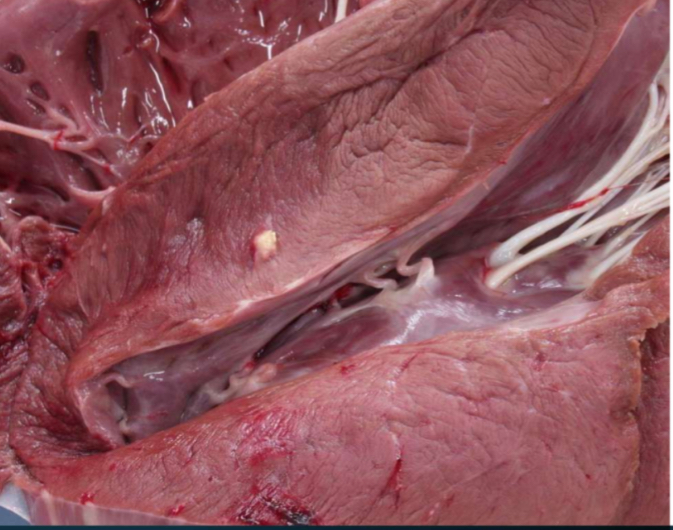
Compulsory inspection of bovine heart
Describe the lesion using 3 words
Potential diagnosis
Judgement
Compulsory inspection of bovine heart
Describe the lesion using 3 words- localized, rounded base, hard, white-cream
Potential diagnosis- cysticercus bovis (Tania Saginata)
Judgement- zoonotic- unfit for human consumption
If animal is not generally infected, parts not infected can be consumed by humans after cold treatment
Not exceeding -7 C for >3 weeks
Not exceeding -10 C for >2 weeks
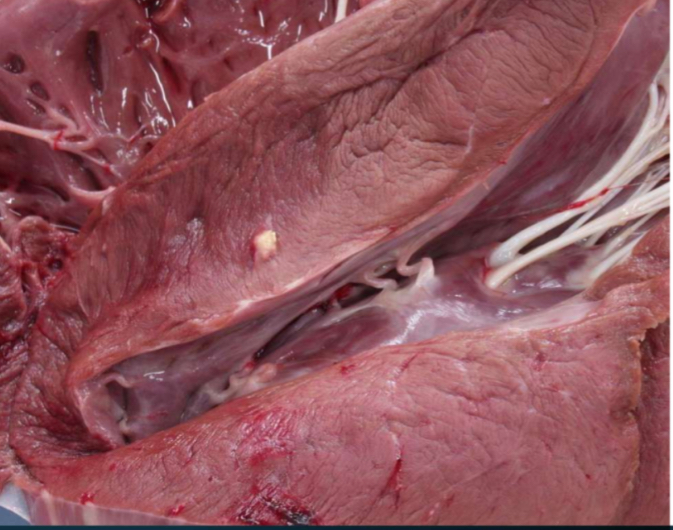
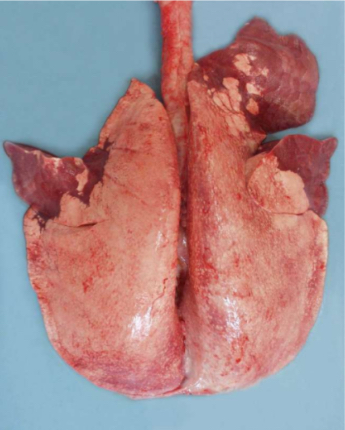
Species and organ
Describe using 3 words
Potential diagnosis
Judgement
Species and organ- lungs of (sheep or cow I couldn’t tell :( )
Describe using 3 words- red, multilobular, edges
Potential diagnosis- enzootic pneumonia
Judgement- local rejection- category 2
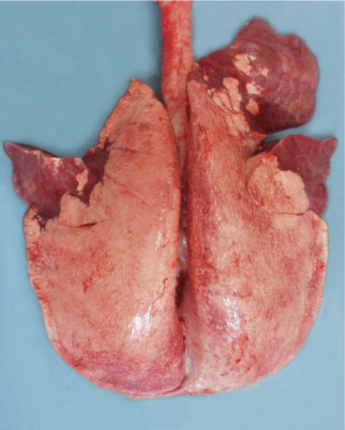
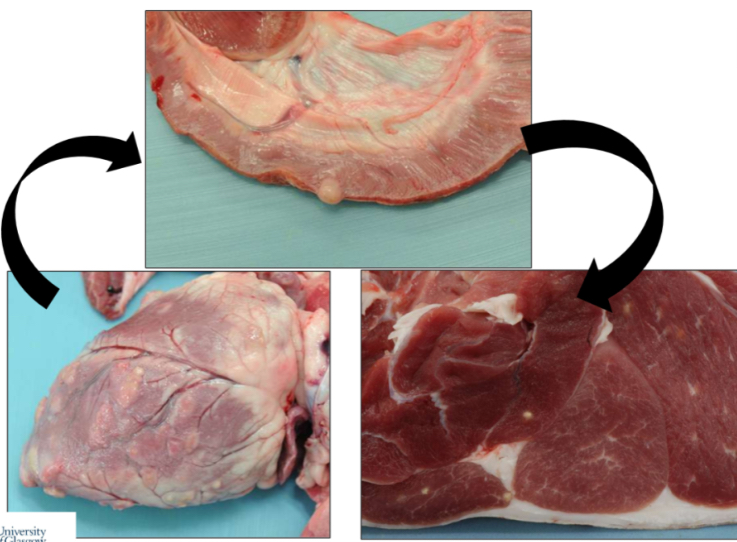
Sheep specimens
Describe the lesions using 4 words
Potential diagnosis
Judgement
Public health implications
Sheep specimens
Describe the lesions using 4 words
Potential diagnosis
Judgement
Public health implications
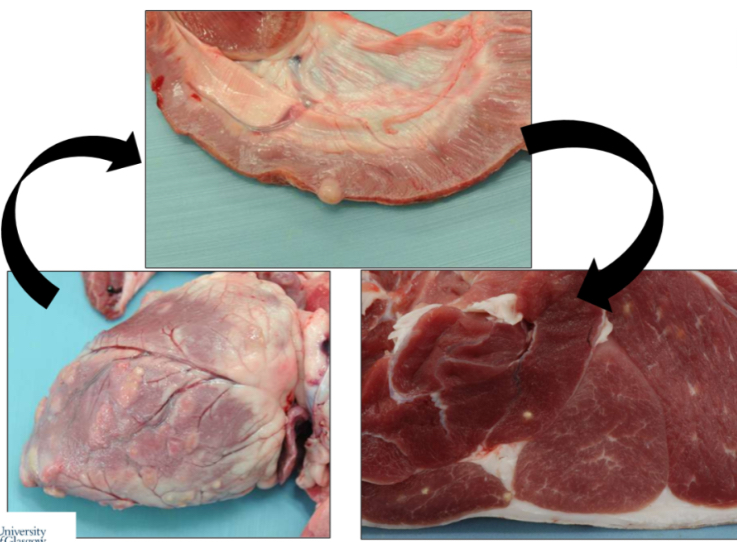
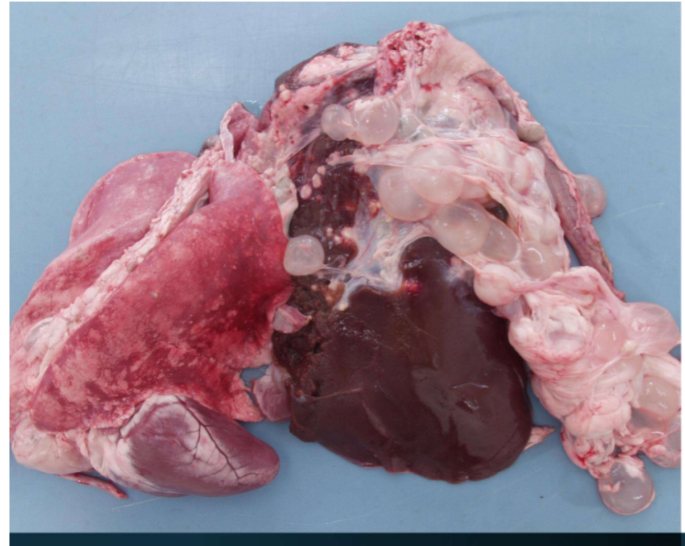
Sheep specimen
Describe lesions with 4 words
Potential diagnosis
Judgement + ABP category
Sheep specimen
Describe lesions with 4 words- fluid like, pedunculated cyst, white dots
Potential diagnosis- C. Taenuicollis
Judgement + ABP category- category 2- local rejection if 1 organ, but total rejection if whole carcass infected (diaphragm, lungs, etc)
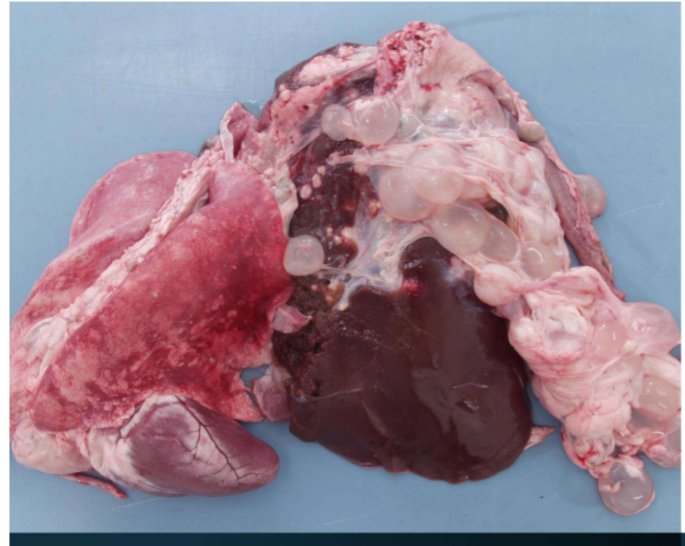
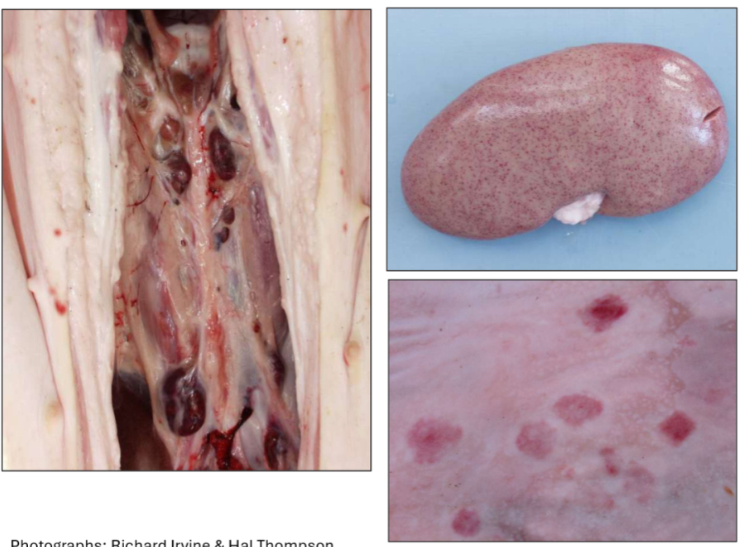
Organ/species
Describe using 3 words per picture
Potential diagnosis
Judgement
Organ/species- pig kidney
Describe using 3 words per picture- diamond shape lesions, enlarged lymph nodes
Potential diagnosis- septicemia
Judgement
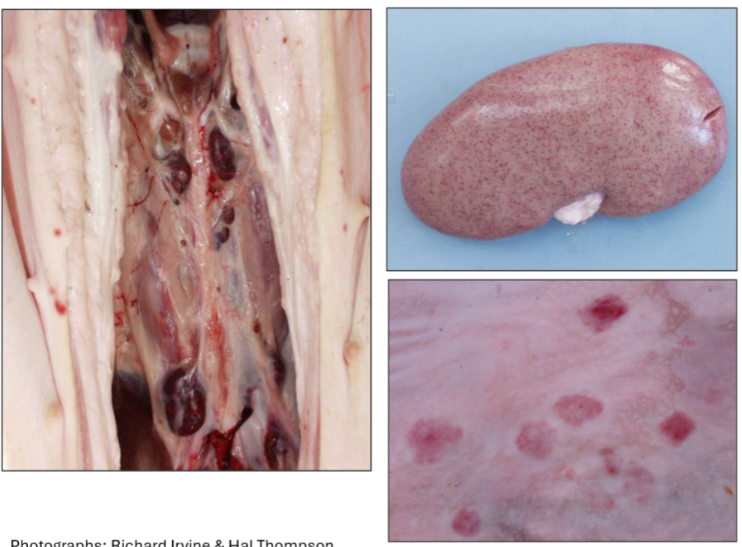
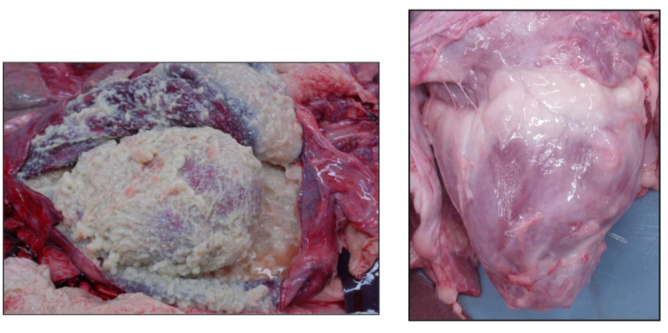
Compulsory inspection for this organ in a pig
Potential diagnosis
Judgement
Compulsory inspection for this organ in a pig
Potential diagnosis
Judgement- pericarditis- local rejection- category 2
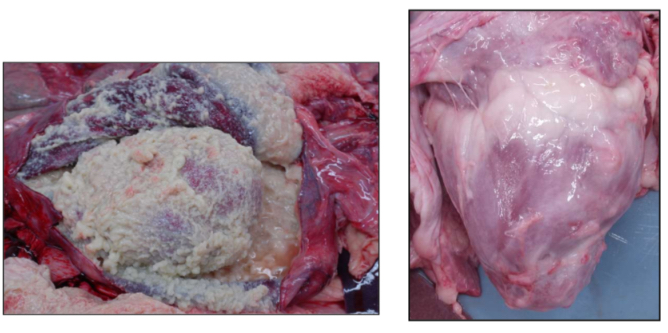
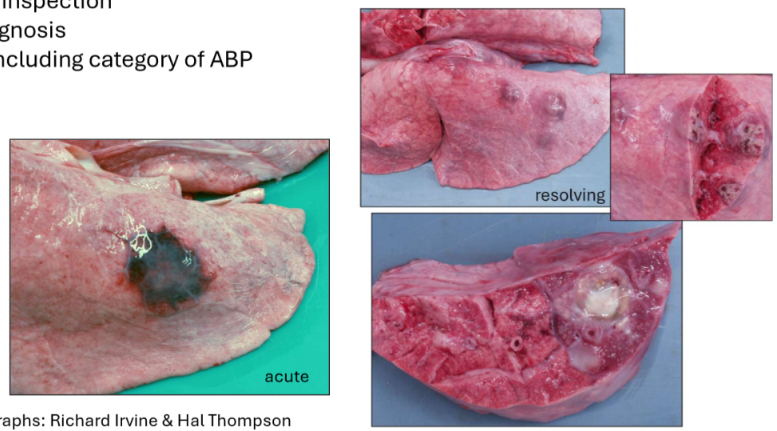
Species/organ
Compulsory inspection
Potential diagnosis
Judgement + ABP category
Species/organ- pig lungs
Compulsory inspection- multi focal focal lesions
Potential diagnosis- pleuropneumonia
Judgement + ABP category- local rejection
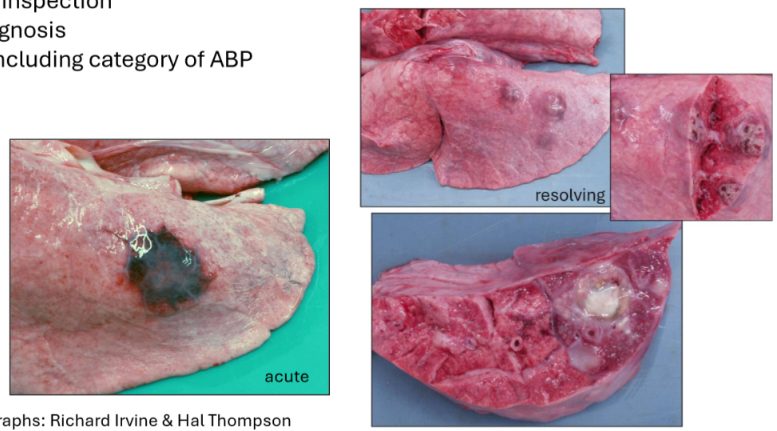
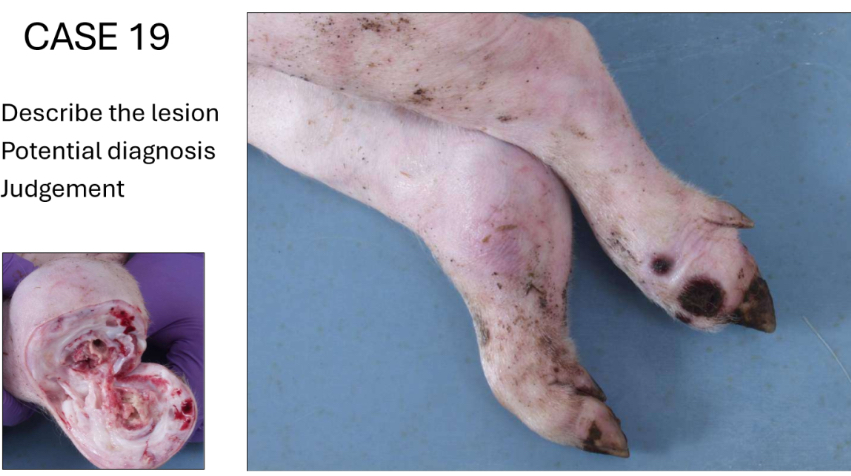
Describe the lesion
Potential diagnosis
Judgement
Describe the lesion- enlarged, metatarsal area, reddish
Potential diagnosis- arthritis
Judgement- category 2- depends how many joints are effected, could be local, could be total even if 2 legs (1 front, 1 back), partial if both back or both front, anymore and total rejection
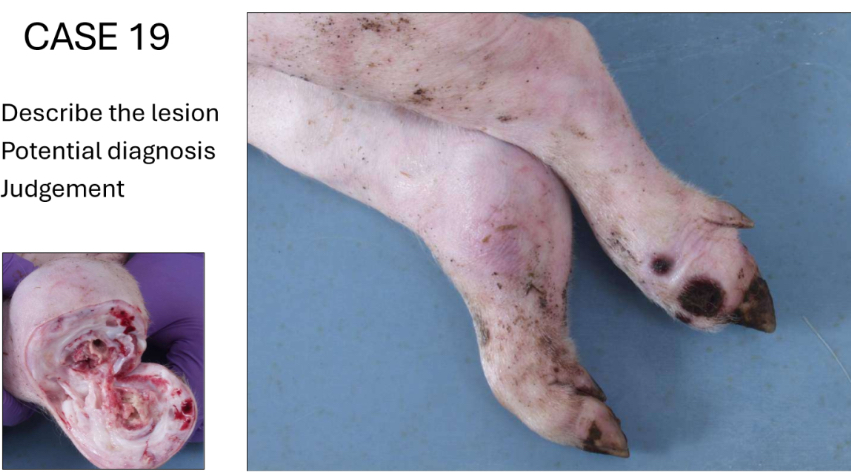
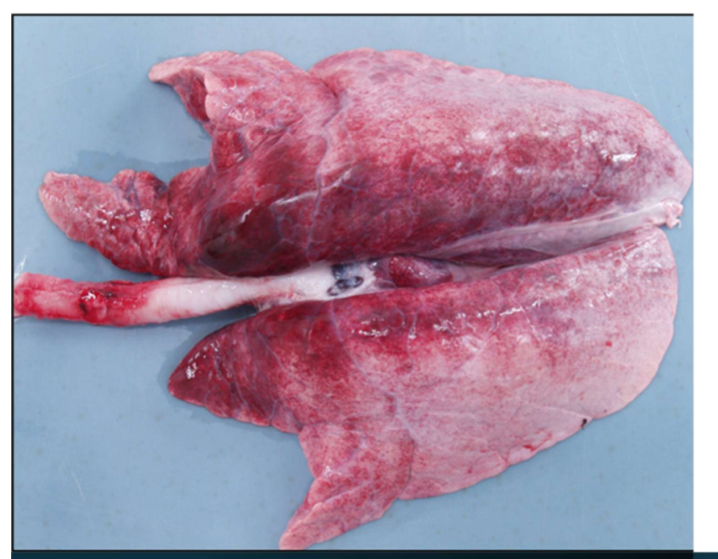
Species and organ
Compulsory inspection
Describe the lesion
Potential diagnosis
Judgement including ABP category
Species and organ- pig lung
Compulsory inspection-visual
Describe the lesion- intralung lesions, trachea infected, diffuse, modal, dark
Potential diagnosis- bloodsplashing
Hemorrhages in lung, muscle, and other organs
Seen in sheep and pigs- associated with electrical stunning
Keep amperage constant and adjust voltage to pig size/weight
Judgement including ABP category
